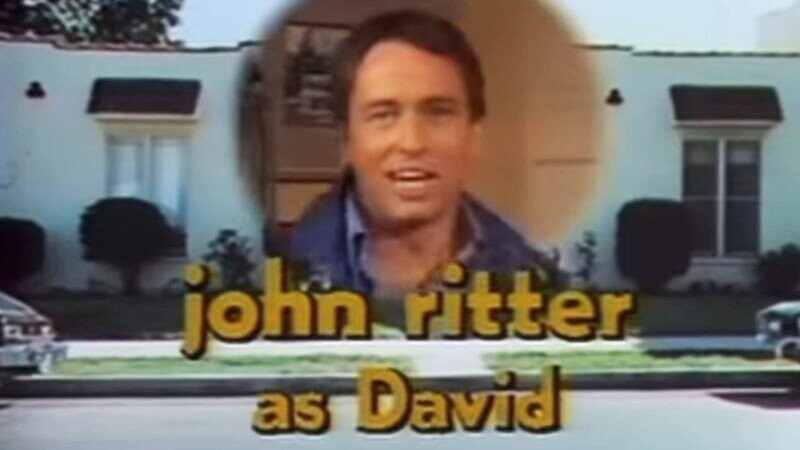
Lost ‘Three’s Company’ Pilot Reveals a Very Different — and Very Strange — Version of the Iconic Sitcom
Before Jack Tripper ever knocked on the door, there was “David” and a different cast of roommates in a surreal alternate take on the hit ‘70s show.
By Keegan Kelly | Published June 10, 2025
Before Three’s Company became a beloved sitcom staple, before viewers heard the now-iconic theme song inviting them to “come and knock on our door,” and long before John Ritter cemented his legacy as Jack Tripper, there was a version of the show that never made it to air — and it’s truly unlike anything fans remember.
Recently, entertainment publicist Danny Deraney unearthed rare footage from the original, unaired pilot episode of Three’s Company and shared it online. The footage includes the show’s first set of opening credits — a strange and fascinating glimpse into what might have been. While some familiar elements remain — namely Norman Fell and Audra Lindley reprising their roles as the grumpy landlord duo, the Ropers — the rest of the package feels like a sitcom from an alternate dimension.
A Bizarro Beginning
In this original iteration, the character of Jack Tripper isn’t even named Jack — he’s “David.” Though still played by John Ritter, the character’s personality and backstory are tweaked significantly. Instead of a goofy culinary student, David is portrayed as a struggling filmmaker. The classic female roommates — Chrissy and Janet — are also nowhere to be found. In their place are Samantha, played by Suzanne Zenor, and Jenny, played by Valerie Curtin (a cousin of Saturday Night Live’s Jane Curtin).
Gone, too, is the famous musical intro that promised “hers and hers and his, three’s company too.” Instead, the theme features an upbeat, wordless “doo-doo-doo-doo-doo,” lending the whole thing a more generic, jingle-like feel. The visuals are equally low-budget: the actors’ headshots are superimposed awkwardly over a still photo of a nondescript Southern California apartment complex.
Despite the odd tone, the pilot had serious pedigree behind it. Larry Gelbart — the Emmy-winning mind behind MASH* — was tapped to develop the first script. It was an unusual choice. Gelbart, known for smart, satirical writing, was a poor fit for the broad comedy and sexual innuendo that Three’s Company would eventually be known for. In fact, Gelbart was reportedly so uncomfortable with the show’s concept that he distanced himself from it after delivering the pilot script, which leaned more toward a character-driven slice-of-life than a full-on farce.
Studio Politics and a Last-Minute Recast
At the time, ABC wasn’t convinced that Three’s Company was a sure thing. The original pilot was passed over in favor of other contenders, and the network shelved the project temporarily. But then CBS expressed interest, and ABC — not wanting to lose a potentially valuable property — reversed course and ordered a reworked version for midseason.
That second pilot brought in Joyce DeWitt as Janet, and Susan Lanier took over the role of Chrissy. The tone was radically altered: the show leaned into its now-signature bawdy humor, awkward misunderstandings, and overt sexuality. The change was intentional — ABC was chasing younger viewers, and the rise of “jiggle TV” was already reshaping primetime programming.
But the network still wasn’t satisfied. Lanier, despite landing the role of Chrissy, didn’t test well with audiences. After seeing newcomer Suzanne Somers appear on The Tonight Show and liking her bubbly presence, producers brought her in to shoot a third pilot — this time, with Ritter, DeWitt, and Somers forming the now-classic trio.

Third Time’s the Charm
The rest, as they say, is television history. The final version of Three’s Company premiered in 1977 and quickly became a ratings juggernaut, eventually running for eight seasons. It set records as the highest-rated midseason premiere at the time and turned all three leads into household names.
Yet this recently resurfaced footage is a striking reminder of just how fragile — and chaotic — the development process behind even the most successful shows can be. If not for a few quick decisions, last-minute casting swaps, and a retooling of tone and character dynamics, Three’s Company as we know it might never have existed.
Instead of Jack, Janet, and Chrissy sharing an apartment, we could have been watching David, Jenny, and Samantha — a trio no doubt charming in their own right, but ultimately forgotten in favor of the magic captured in that third and final pilot.
Sometimes in Hollywood, it really does take three tries to get it right.
